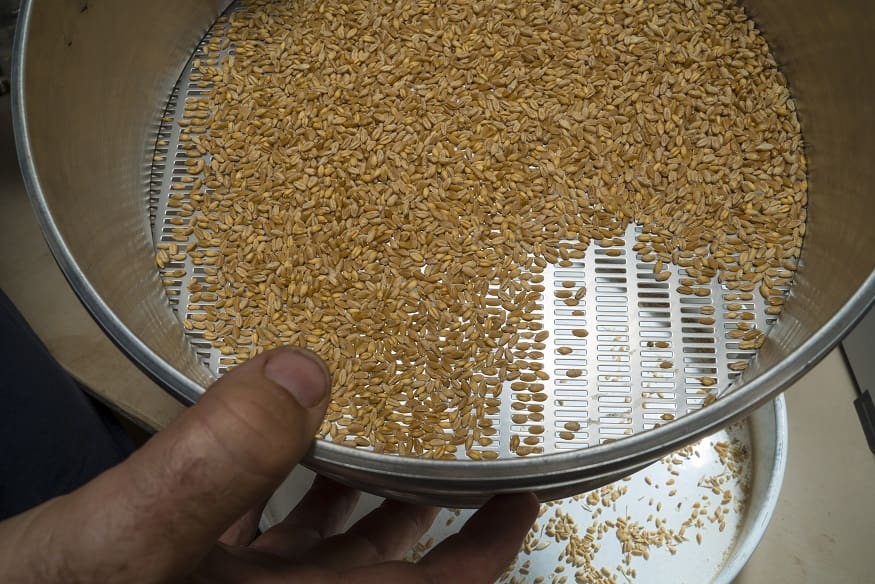DRY and hot seasonal conditions have resulted in small and shrivelled grain being harvested in many regions this season, and growers are reminded of some rules of thumb to adhere to when retaining seed following a tough year.

Wheat being tested for moisture and protein, and screened, before the load is stored. Photo: Evan Collis Photography
This grain can be susceptible to poor germination and low vigour (ability to push through the soil following germination) so extra care is needed and sowing rates in 2020 may need to be adjusted.
Frost may have also affected grains in some areas, causing a lower hectolitre weight and higher screenings – the material that is removed when grain is cleaned.
Grains Research and Development Corporation (GRDC) manager agronomy, soils and farming systems – west, Josh Johnson, advised growers to select their cleanest paddocks from which to retain seed, from both a weeds and seed purity standpoint.
“Paddock selection for a seed crop is generally determined before the season and, barring any crop failures, should not change during harvest,” Mr Johnson said.
“If you are grading seed, take the largest seed size possible to get the required amount for seeding.”
Mr Johnson said while a laboratory seed test for germination and seedborne diseases should be carried out before sowing, growers could also conduct a simple on-farm test after harvest to ensure they retained enough viable seed to achieve acceptable plant populations the following season.
“This on-farm test involves collecting and counting seed from each lot to be planted, putting the seed between moist paper towels placed in a sealed plastic bag, leaving them for five to seven days in a warm place and then calculating the germination percentage after counting the number of seeds that have not germinated,” he said.
Factors influencing how much seed needs to be retained for sowing include:
- Germination rate tested at harvest
- Further decline in germination between harvest and sowing
- Screenings, foreign and small seeds lost at cleaning
- Allowance for seeds that germinate but don’t emerge
- Seed weight (grams per 1000 seeds)
- Buffer to allow for change of plans in planting area.
Mr Johnson said once seed had been graded, correct storage was needed to ensure the viability of seed for the following season.
“This includes ensuring storage temperatures are cool, using aeration in the silo and making sure the seed has low grain moisture content,” he said.
“Monthly monitoring of the stored seed is advised, as is prompt fumigation if any pests are detected.”
Source: GRDC




HAVE YOUR SAY